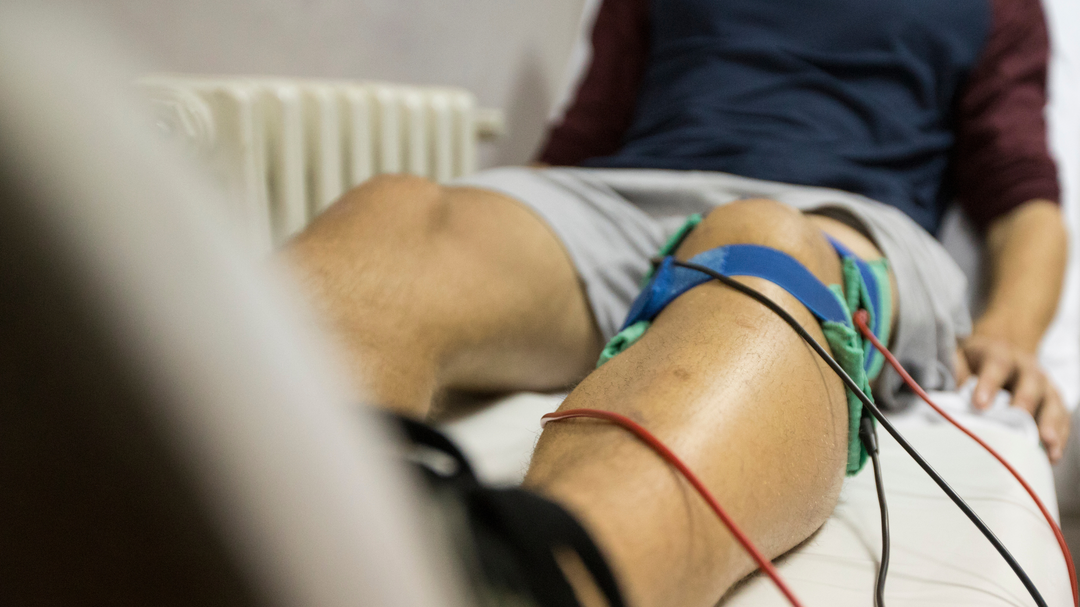Strength After Meniscus and ACL Tears: Understanding Your Recovery Options

The knee joint is supported by ligaments and tendons, allowing us to walk and perform complex movements like ice skating jumps. Although the knee joint is a complex structure, even athletes and active individuals can suffer from a torn anterior cruciate ligament (ACL). This type of injury is particularly common among those who engage in intense physical activities.
Learn About the ACL: What It Is and Why It Matters
The anterior cruciate ligament, or ACL, is an essential component of the knee joint—it offers stability and helps to prevent the shinbone from shifting in front of the thighbone. The ACL is prone to injury when engaging in sports or during an unexpected collision, resulting in a tear. Soccer, basketball, skiing, and football players are more likely to hurt their ACL because of certain movements like planting, cutting, and pivoting. As a result, ACL tears are common among athletes of various skill levels. In most of these cases, surgery is often necessary to repair the damage.
What Causes an ACL Tear?
An ACL tear usually occurs when an individual's knee undergoes sudden and extreme stress. This may happen due to various reasons, such as the knee getting hit directly or suddenly and forcefully twisting. High-impact sports that involve jumping, landing, and sudden changes of direction are some of the most common ways people tear their ACLs. Overuse or repetitive stress injuries can also cause an ACL tear. Some people may be more predisposed to ACL tears due to genetic factors, such as having a naturally looser joint.
Who is at Risk for ACL Tears?
ACL tears often occur in athletes who play sports involving quick turns, jumps, or pivots such as basketball, soccer, skiing, football, and volleyball. However, ACL tears may also occur in non-athletes who may experience an injury due to a sudden twist or collision. Women are also at an increased risk of ACL tear, which may be due to differences in the anatomy and muscular strength around the knee.
What You Need to Know About ACL Tears
An ACL tear usually happens when an individual experiences a sudden and extreme twisting or hyperextension of the knee joint. This may happen due to landing awkwardly from a jump, pivoting or changing direction too quickly, or receiving a direct blow to the knee. ACL tears are also prevalent in sports that involve rapid acceleration and deceleration, such as football and basketball. Overuse injuries, wear and tear due to aging, and other degenerative conditions can also weaken the ACL over time, increasing the likelihood of injury.
What happens if you tear your ACL?
If you tear your ACL, it can result in significant pain, swelling, and knee instability. Often, a person will report hearing a popping sound when the injury occurs, followed by swelling that will develop quickly. Depending on the severity of the tear, a person may experience mild to severe symptoms. Complete tears of the ACL will cause instability in the knee joint and lead to feelings of sudden shifting or buckling. These symptoms can make it difficult for individuals to perform everyday tasks that require the use of the knee joint.
Additionally, activities such as jumping and landing, changing direction quickly, or pivoting on the knee may be difficult without discomfort or pain. It's important to see a doctor to diagnose and treat knee problems early. This can prevent more damage to the knee and help you regain full use of it. The plan may include physical therapy, bracing, or surgery to fix a torn ligament in the knee joint. Physical therapy makes the knee muscles stronger, bracing provides stability, and surgery reconstructs the damaged ligament.
What to Do About a Torn ACL
If you have a torn ACL, it is essential to take immediate action to prevent further damage to your knee. Firstly, try to stay off your leg and elevate it as much as possible. Then, it's important to decrease inflammation by applying ice to your knee and taking non-steroidal anti-inflammatory drugs (NSAIDs) such as ibuprofen. However, seeking professional medical advice is crucial to obtain an accurate diagnosis so that you can receive the most effective treatment. If you think you have an ACL injury, it's important to see an orthopedist or sports medicine doctor for a proper diagnosis and treatment plan. Depending on the severity of the tear, your doctor may recommend nonsurgical treatment or orthopedic surgery to repair the damage. Physical therapy exercises are critical for strengthening the muscles around your knee joint and improving its range of motion, regardless of whether surgery is required. So, if you think you have torn your ACL, don't delay in seeking medical advice to get the right treatment for your knee.
Diagnosing a Torn ACL: What to Expect
To diagnose a torn ACL, a medical professional will typically begin by examining the knee for swelling, tenderness, and instability. They may also ask about the specific details of the injury, including how it occurred and any symptoms experienced. Additionally, medical professionals may use imaging tests like X-rays and magnetic resonance imaging (MRI) to evaluate the severity of the injury and confirm the diagnosis. An MRI can provide a clear image of the ACL and help identify any other damage to the knee, such as damage to other ligaments, cartilage, or bone. Once an accurate diagnosis of a torn ACL is obtained, medical professionals can recommend the most appropriate treatment plan to ensure a full recovery.
Is Non-Surgical Treatment for ACL Tears a Possibility?
Yes, non-surgical treatment for ACL tears is a possibility, depending on the severity of the tear and the individual's lifestyle and activity level. In cases where the injury is less severe or in less active individuals, non-surgical treatment and rehabilitation may be sufficient. Non-surgical treatment plans often include physical therapy exercises to strengthen the muscles surrounding the knee joint and improve range of motion. Your doctor may also recommend the use of a knee brace to help stabilize the knee joint and relieve pain. If you have a knee injury and your lifestyle involves sports or the injury is severe, your doctor may recommend surgery to ensure a full recovery and to prevent further damage to the knee joint. It's essential to consult with a medical professional who can evaluate the severity of your ACL injury and recommend the best course of treatment accordingly.
Drawbacks of Nonsurgical Treatments
When it comes to treating ACL tears, non-surgical options can yield varying results. Non-surgical treatments may not be enough to restore knee stability, which can prevent people from returning to their previous level of activity. If you don't have a healthy ACL, your knee's menisci are more prone to injury. The menisci are cartilage pads that cushion the knee joint's bone connection. This can lead to pain and swelling in the knee and, more importantly, increase the risk of developing osteoarthritis later in life. In any case, it's important to keep in mind that non-surgical treatment may not always be the best option for all types of ACL injuries. If you have knee pain or discomfort, it's important to speak to a doctor or medical expert to determine the best treatment for your needs.
When Do You Need to Get ACL Surgery?
ACL surgery is often the best course of action when the ACL is completely torn. This is especially true for athletes and those who live active lifestyles. Additionally, if the tear causes the knee to buckle with activity or daily tasks as simple as walking or going upstairs, surgery may be necessary. ACL reconstruction surgery can help restore stability to the knee joint and prevent further damage to the menisci and other structures in the knee. It is also an option for younger patients who have an incomplete tear of the ACL that might lead to future instability and pain. It's important to carefully evaluate an ACL tear before deciding on surgery. Each patient's individual circumstances, needs, and preferences should be considered.
An ACL tear can significantly affect your active lifestyle and overall well-being. Without expert care, recovery could become a long, complicated process, impacting your mobility and high-performance activities. Caliber PT, NYC’s premier provider of physical therapy, offers personalized treatments for swift and successful ACL recovery. We promise unparalleled care to get you back on track. Choose Caliber PT, and never compromise on your health.
You can give us a call at (646) 668-7210 to schedule your appointment today.
